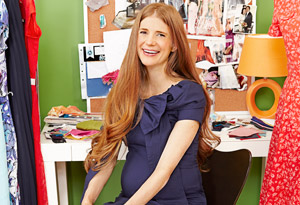How They Discovered Their Dream Careers

Woolley had hoped to earn a PhD in neuroscience, but abandoned the pursuit in 2006. Three years earlier, she'd been diagnosed with Addison's disease—a disorder that interferes with the production of adrenal hormones—and her symptoms were worsening. "I constantly felt disoriented, like I'd been woken up at 3 A.M.," she says. When doctors told Woolley she required intense treatment, she moved in with her parents in Salt Lake City.
"I needed a project to keep me sane," says Woolley, who had loved clothes since childhood, and had even written "fashion designer" as her desired profession on an eighth-grade career-matching exam (the results said she was best suited to science). Remembering this, she ordered a copy of The Fashion Designer Survival Guide. Reading the book gave her a rush. "It all suddenly seemed doable," Woolley says. Soon she secured a loan and found a manufacturer. Her design vision was simple: dresses with vintage cuts ("They flatter the waist, which is great for shorter people like me") made of fabric with some stretch.
In December 2006, Woolley and a partner launched Shabby Apple, with ten work-to-weekend dresses, like a gray T-shirt dress with puffed shoulders and a ruched-sleeve mock-turtleneck dress in green—all priced below $100. Her health beginning to stabilize, she filled orders from her parents' house.
Since then Shabby Apple has relocated to a warehouse nearby; in 2011 the line generated approximately $3 million in sales. Woolley runs the company remotely (she lives with her husband and new baby in New York), phoning or Skyping into brainstorming sessions with her team. This creative collaboration is something Woolley says she never had in the lab: "It's the part of my job I enjoy most. It's like we're solving a big puzzle."—Jessica Sylvester
Next: From fund-raiser to chocolatier



